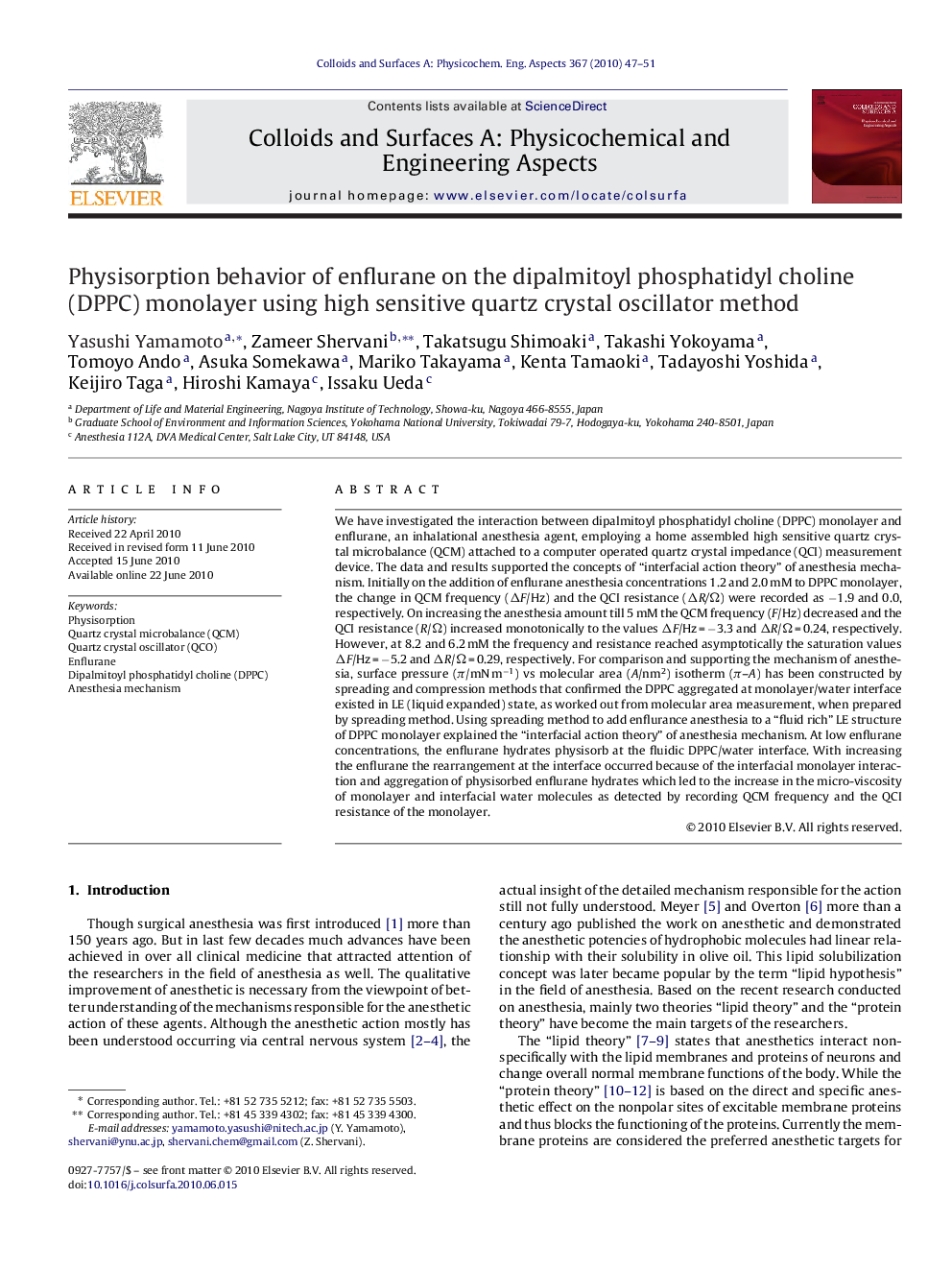| Article ID | Journal | Published Year | Pages | File Type |
|---|---|---|---|---|
| 595151 | Colloids and Surfaces A: Physicochemical and Engineering Aspects | 2010 | 5 Pages |
Abstract
We have investigated the interaction between dipalmitoyl phosphatidyl choline (DPPC) monolayer and enflurane, an inhalational anesthesia agent, employing a home assembled high sensitive quartz crystal microbalance (QCM) attached to a computer operated quartz crystal impedance (QCI) measurement device. The data and results supported the concepts of “interfacial action theory” of anesthesia mechanism. Initially on the addition of enflurane anesthesia concentrations 1.2 and 2.0 mM to DPPC monolayer, the change in QCM frequency (ÎF/Hz) and the QCI resistance (ÎR/Ω) were recorded as â1.9 and 0.0, respectively. On increasing the anesthesia amount till 5 mM the QCM frequency (F/Hz) decreased and the QCI resistance (R/Ω) increased monotonically to the values ÎF/Hz = â3.3 and ÎR/Ω = 0.24, respectively. However, at 8.2 and 6.2 mM the frequency and resistance reached asymptotically the saturation values ÎF/Hz = â5.2 and ÎR/Ω = 0.29, respectively. For comparison and supporting the mechanism of anesthesia, surface pressure (Ï/mN mâ1) vs molecular area (A/nm2) isotherm (Ï-A) has been constructed by spreading and compression methods that confirmed the DPPC aggregated at monolayer/water interface existed in LE (liquid expanded) state, as worked out from molecular area measurement, when prepared by spreading method. Using spreading method to add enflurance anesthesia to a “fluid rich” LE structure of DPPC monolayer explained the “interfacial action theory” of anesthesia mechanism. At low enflurane concentrations, the enflurane hydrates physisorb at the fluidic DPPC/water interface. With increasing the enflurane the rearrangement at the interface occurred because of the interfacial monolayer interaction and aggregation of physisorbed enflurane hydrates which led to the increase in the micro-viscosity of monolayer and interfacial water molecules as detected by recording QCM frequency and the QCI resistance of the monolayer.
Related Topics
Physical Sciences and Engineering
Chemical Engineering
Colloid and Surface Chemistry
Authors
Yasushi Yamamoto, Zameer Shervani, Takatsugu Shimoaki, Takashi Yokoyama, Tomoyo Ando, Asuka Somekawa, Mariko Takayama, Kenta Tamaoki, Tadayoshi Yoshida, Keijiro Taga, Hiroshi Kamaya, Issaku Ueda,
